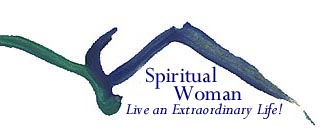 Please Support this Site!
Please Support this Site!
Visit the Spiritual Woman Blog
Get RSS Feed at http://feeds.feedburner.com/SpiritualWoman
 Please Support this Site!
Please Support this Site!
|
Please subscribe to our free ezine below: |
Visit the Spiritual Woman Blog Get RSS Feed at http://feeds.feedburner.com/SpiritualWoman |
|
Home Prayer Christmas Discerning the Will of God Relationships and Family Finding Meaning in Work Health and Wellness Nurturing the Creative Spirit When Life Hurts Spiritual Direction Profiles in Faith Book Reviews Links Contact Us Submit an Article |

HolyLand USA: A Catholic Ride Through America's Evangelical Landscapeby Peter Feuerherd New York, Crossroad Publishing Company, 2006 Reviewed by Patrice Fagnant-MacArthur Peter Feuerherd, a winner of five Catholic Press Awards and editor of "American Catholic," delves into the relationships between Evangelicals and Catholics in "Holy Land USA." The title comes from a Holy Land theme park that exists in Orlando, FL. Feuerherd both begins and ends this book with his traveling through this theme park on two separate occasions. In the year that transpires between these two visits he seeks to discover what is going on between Evangelicals and Catholics in America. After centuries of discord the two are coming together, finding common ground in moral issues and learning and borrowing from each other's liturgical practices. Part journalistic exposition and part spiritual memoir, "Holy Land USA" balances religious history with profiles of people of faith on both sides of the liturgical divide. For Feuerherd, this quest is personal. After being raised Catholic, his daughter stated that she "never felt at home in the Catholic church" and has since found spiritual solace in an Evangelical Church in New Jersey. While questioning whether on some level he has failed as a parent, as a true blue-stater, he respects her right to explore the "religious marketplace." He also has respect for Evangelicals, for both the strength of their faith and their fervor in spreading their faith. At the same time, Feuerherd is firmly ensconced in the Catholic Faith. He worked for the Catholic press for many years. While he admits he at times became jaded because of things going on behind the scenes, he has stayed firmly rooted in the faith he was raised in. For this work, he interviewed people who have crossed both from Evangelical to Catholic ranks and vice versa as well as some who straddle the fence. Their spiritual histories bring a human touch to what could otherwise be a very abstract study. "Holy Land USA" is interesting for the stereotypes that it seeks to break down. For example, the media describes all Evangelicals as being aligned with the Republican party and pushing for social conservatism in the public square. The reality is far more complex with Evangelicals holding political views across the spectrum. Surprisingly enough, in all the Evangelical religious services he attended as research for this book, not once did any preacher weigh in on the political issues of the day. They focused instead on social concerns and a practical spirituality of living better in one's family and workplace. Feuerherd also explores how Catholics have been influenced by Evangelicals, in particular in the Charismatic movement and in a renewed interest in Scripture studies and fellowship. He suggests that Catholics could learn much from how Evangelicals minister to teens and young adults. Meanwhile Evangelicals admire how Catholics reach young children and in some cases have begun to show greater appreciation for the common Christian history that both share. "Holy Land USA" does not have a clear premise. It seeks to merely explore the issues and provide a snapshot of Evangelical-Catholic relations at this point in history. In that respect, Feuerherd achieved his goal. It reads quickly and provides valuable insight into what may prove to be an increasingly influential relationship. Patrice Fagnant-MacArthur is editor of http://www.spiritualwoman.net and the corresponding blog http://spiritualwomanthoughts.blogspot.com |